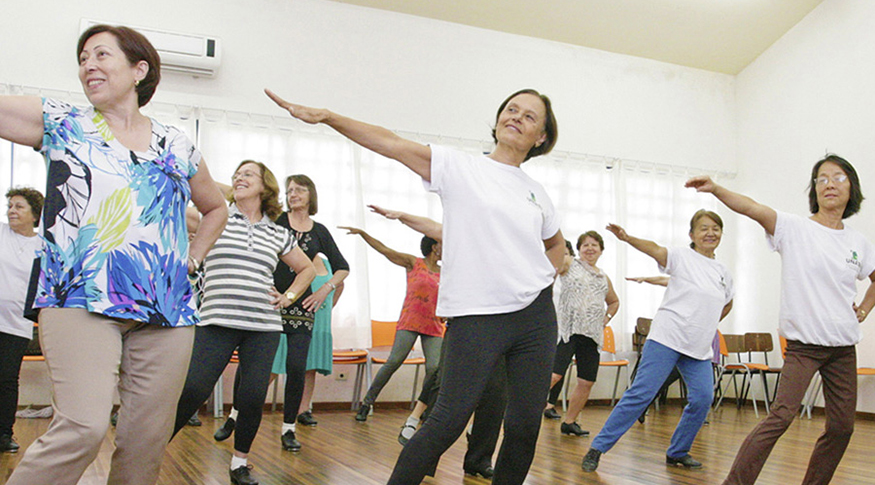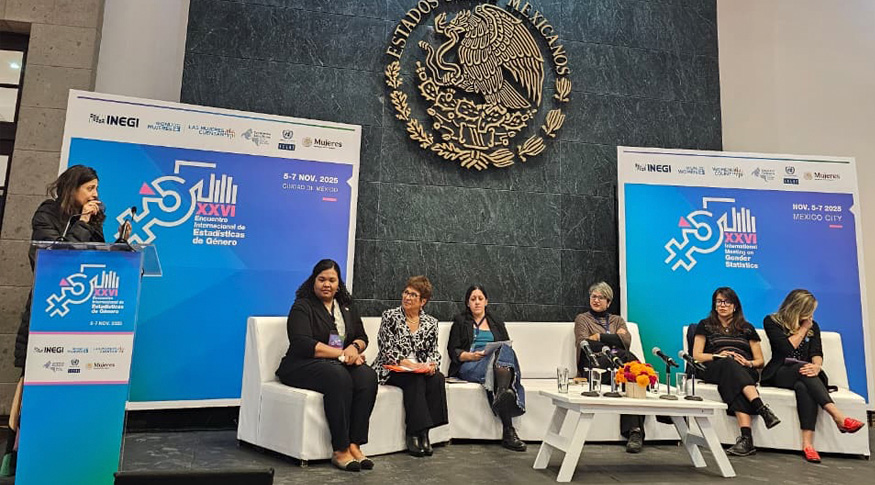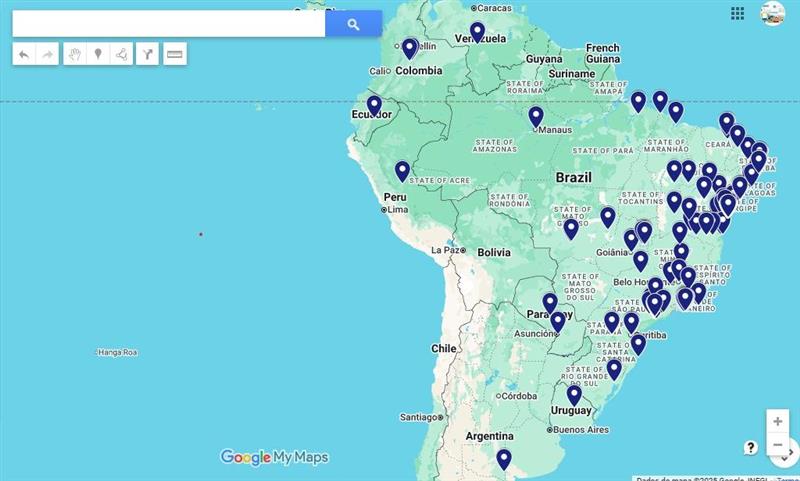2022 Census
2022 Census: number of elderly persons in the Brazilian population grew 57.4% in 12 years
October 27, 2023 10h00 AM | Last Updated: November 06, 2023 11h28 AM
Highlights
- In 2022, the total number of persons aged 65 years and over in Brazil (22,169,101) reached 10.9% of the population, rising 57.4% over 2010, when this contingent was of 14,081,477 or 7.4% of the population. On the other hand, the total number of children aged up to 14 years retreated from 45,932,294 (24.1%) in 2010 to 40,129,261 (19.8%) in 2022, a drop of 12.6%.
- The North Region was the youngest one: 25.2% of its population had up to 14 years, followed by the Northeast (21.1%).
- The Southeast and South regions had older structures: 12.2% and 12.1% of their population were aged 65 years and over, respectively.
- The median age of the Brazilian population increased 6 years since 2010 and hit 35 years in 2022.
- The ageing index reached 55.2 in 2022, indicating 55.2 elderly persons for every 100 children aged between 0 and 14 years. The index had been 30.7 in 2010.
- In the Brazilian population, 51.5% (104,548,325) were women and 48.5% (98,532,431) were men in 2022, with nearly 6.0 million more women than men.
- The sex ratio, number of men for every 100 women, changed from 96.0 in 2010 to 94.2 in 2022.
- The Southeast registered the lowest proportion of men, with a sex ratio of 92.9 in 2022.
- The highest sex ratio was in the North Region (99.7). It was the first census in which that region recorded the number of women above that of men.
- The sex ratio by age group shows a higher proportion of men from birth to 24 years. The proportion of women is higher from the age group of 25-29 years onwards.
- The proportion of men, on average, decreases with the increase of the population of the municipalities, starting from 102.3 men for every 100 women in the municipalities up to 5,000 inhabitants to 88.9 for the municipalities with more than 500,000 inhabitants.
- This second compilation of the Census shows a population of 203,080,756 inhabitants, with 18,244 more people than in the first compilation and few changes in the population of 566 municipalities.

In 2022, the total number of persons aged 65 years and over in Brazil (22,169,101) reached 10.9% of the population, rising 57.4% over 2010, when this contingent was of 14,081,477 people or 7.4% of the population. It is unveiled by the results of the universe of the Brazilian population, disaggregated by age and sex, of the 2022 Population Census. This second compilation of the Census shows a population of 203,080,756 inhabitants, with 18,244 more people than in the first compilation.
“After the release of the first results, it was required to punctually revise some procedures, which caused that minimal difference in percentage terms,” explains Luciano Duarte, the Census technical manager. A total of 566 municipalities had their population changed in relation to the results of the 2022 Census previously released.
The increase in the population aged 65 years and over along with the decrease in the parcel of the population up to 14 years in the same period, which changed from 24.1% to 19.8%, confirms the clear ageing of the Brazilian population.
“Along the time, the base of the age pyramid has been narrowing, due to the reduction of fertility and births in Brazil. The change in the form of the age pyramid became visible from the 1990s onwards and it clearly loses its pyramidal form from the 2000s onwards. Along the years, the reduction in the young population has been noticed, as well as the increase in the adult population and in the top of the pyramid up to 2022,” analyzes Izabel Marri, IBGE manager of Studies and Analyses of the Demographic Dynamics.

In 1980, Brazil had 4.0% of the population aged 65 years and over. The rate of 10.9% reached in 2022 by such parcel of the population represents the highest percentage ever found in the Population Censuses. In the other edge of the age pyramid, the percentage of children up to 14 years of age, which was 38.2% in 1980, changed to 19.8% in 2022. “When it talk about population ageing, it is exactly the reduction in the proportion of the younger population in detriment of the increase in the older population,” highlights her.

The analysis of the proportions of these specific age groups by Major Region shows that the North Region is the youngest in Brazil, with 25.2% of its population aged up to 14 years, followed by the Northeast (21.1%). The Southeast and South regions show older structures, with 18% and 18.2% of the youngsters between 0 and 14 years and higher proportions of elderly persons aged 65 years and over (12.2% and 12.1%, respectively). The Central-West shows an intermediate structure, with an age distribution closer to the national average.
“It can be perceived that the drop in the fertility firstly occurred in the Southeast and South, making them the older regions with a lower proportion of youngsters. Although it has registered a reduction in the fertility over the last years in all socioeconomic strata, the North Region still remains as the proportionally younger region. The North Region also shows the lowest proportion of adults and elderly persons in relation to the other regions,” points out the manager.
Median age of the population increased 6 years between the Censuses and hit 35 years
The median age is an indicator that divides the population between those 50% younger and those 50% older. In Brazil, the median age rose from 29 years to 35 years between 2010 and 2022, confirming the ageing of the population. In the same period, this indicator increased in the five Major Regions: North, from 24 to 29 years; Northeast, from 27 to 33 years; Southeast, from 31 to 37 years; South, from 31 to 36 years; and Central-West, from 28 to 33 years.
“When looking at the Federation Units, the median age is not only affected by the drop in the fertility, but it can be also caused by migration, receiving persons of a certain age group in certain states, mainly young adults, as well as in those states from which the migrants leave. These factors also impact and help to understand the median age noticed in the FUs and in the municipalities,” explains Marri.

Between 2010 and 2022, ageing index rises from 30.7 to 55.2
The ageing index is calculated as the ratio between the group of elderly persons aged 65 years and over and the population aged between 0 and 14 years. Therefore, the higher the indicator, the older is the population. In Brazil, this index reached 55.2 in 2022, indicating 55.2 elderly persons for every 100 children aged between 0 and 14 years. In 2010, the ageing index was lower, corresponding to 30.7.
Smaller municipalities with up to 5,000 inhabitants had, on average, the highest ageing indexes, comprising a proportion of 76.2 elderly persons for every 100 persons aged between 0 and 14 years. Larger municipalities, with more than 500,000 inhabitants, recorded the second highest indexes, with 63.9 elderly persons for every 100 individuals in the age group between 0 and 14 years.
A gradual reduction in the ageing index can be noticed among the municipalities from up to 5,000 inhabitants to those between 50,001 and 100,000 inhabitants. From this point onwards, the values grow gradually as the population size increases. “A possible explanation for this phenomenon is the displacement of persons at working age to larger cities in search of jobs, education and services. The displacement of adults with their children is predominantly of persons at reproductive age, which will also result in less children and births in smaller cities, of origin,” clarifies the IBGE researcher.
Brazil has more 6.0 million women than men
Of the total resident population in Brazil, 51.5% (104,548,325) were women and 48.5% (98,532,431) were men, i.e., nearly more 6.0 million women than men in 2022.
The sex ratio, number of men in relation to the group of 100 women, was 94.2. It showed that the historical trend of female predominance in the composition of the population by sex deepened: in 1980, they were 98.7 men for every 100 women; in 2010, 96.0.
“It is related to the bigger mortality of men in every age group: from babies up to older ages, the mortality of men is higher. Moreover, male excess mortality is more intense in adult ages. With the ageing of the population, reduction in the population aged between 0 and 14 years and increase of the elder population, the proportion of women increases, since they survive more than men.”
The increase in the proportion of women was repeated along every Major Region. Since 2000, the Southeast Region registered the lowest proportion of men, with a sex ratio of 92.9 in 2022. The highest sex ratio was in the North Region (99.7), being the first time that this region showed a higher number of women than men.
The Federation Units with the lowest sex ratios were Rio de Janeiro (89.4), Federal District (91.1) and Pernambuco (91.2). On the other hand, Mato Grosso (101.3), Roraima (101.3) and Tocantins (100.4) have more men than women. “Besides population ageing, the effects of migration also influence the sex ratios in each place,” explains Marri.

Men prevail in the population up to 19 years
The sex ratio by age group in Brazil and in the Major Regions showed a higher proportion of men in the population up to 19 years of age, starting from 103.5 men for every 100 women in the bracket between 0 and 4 years.
From the age group between 25 and 29 years, the female population became the majority in all the regions. In the Northeast, it happened already in the group between 20 and 24 years. In the group between 90 and 94 years, women were virtually twice, with a sex ratio of 50.4. In the highest age group, aged 100 years and over, that indicator stayed at 38.8.
“The higher incidence of men in the first ages is a consequence of a higher birth of male children in relation to female children. The bigger contingent of men decreases with age due to male excess mortality, more intense in the youth as result to deaths due to extreme causes,” explains Marri.
Most populated municipalities have lower proportion of men
The sex ratio was also lower in the most populated municipalities, i.e., municipalities with a bigger population have a lower proportion of men in relation to women. These values start from 102.3 men per women in the municipalities up to 5,000 inhabitants down to 88.9 for municipalities with more than 500,000 inhabitants. It should be highlighted that the sex ratios assume values below 100 from the bracket between 20,001 and 50,000 inhabitants, reflecting a higher share of women in the composition of the population.

More about the survey
The Population Census is the major Sof reference to understand the life conditions of the population in every Brazilian municipality and its internal territorial divisions. The results of the universe of the population by age and sex of the 2022 Population Census show the distribution of the resident population in Brazil according to age groups and sex, as well as some indicators derived from this information, like median age, ageing index and sex ratio for Brazil, Major Regions, Federation Units, urban concentrations and municipalities. You can access the major results, graphs and maps in the Overview of the 2022 Census hotsite, in the Interactive Geographic Platform and on Sidra.

















